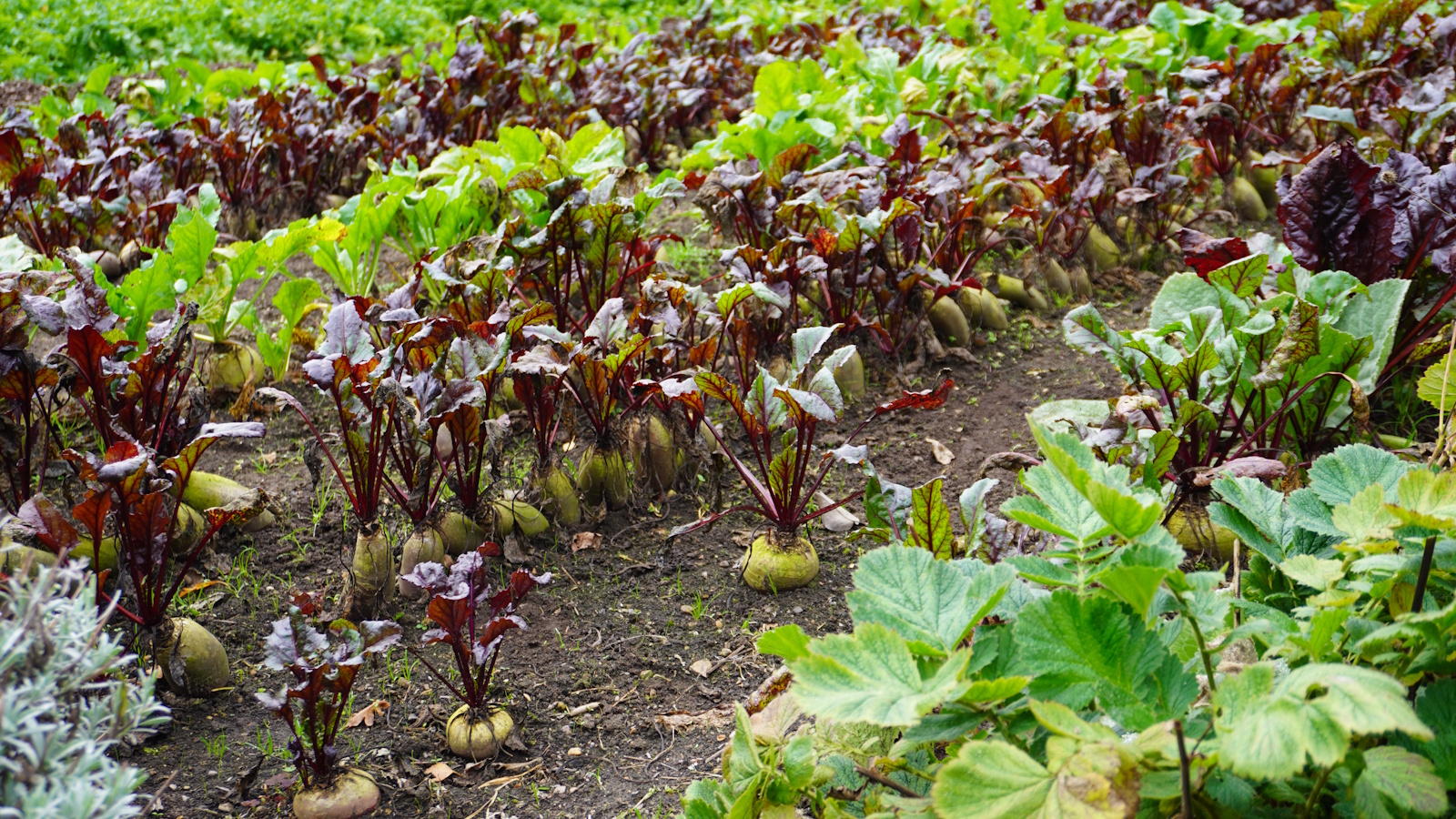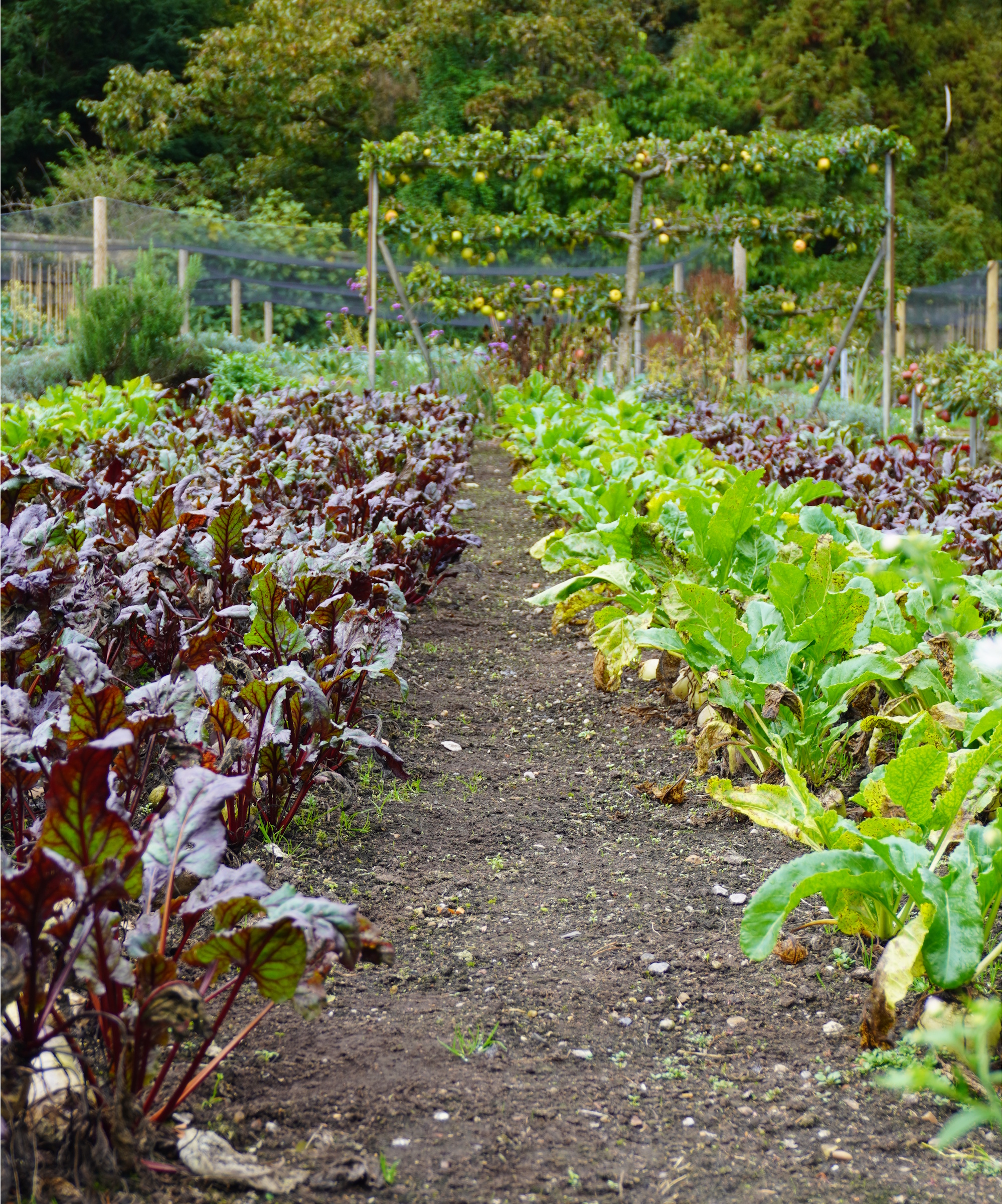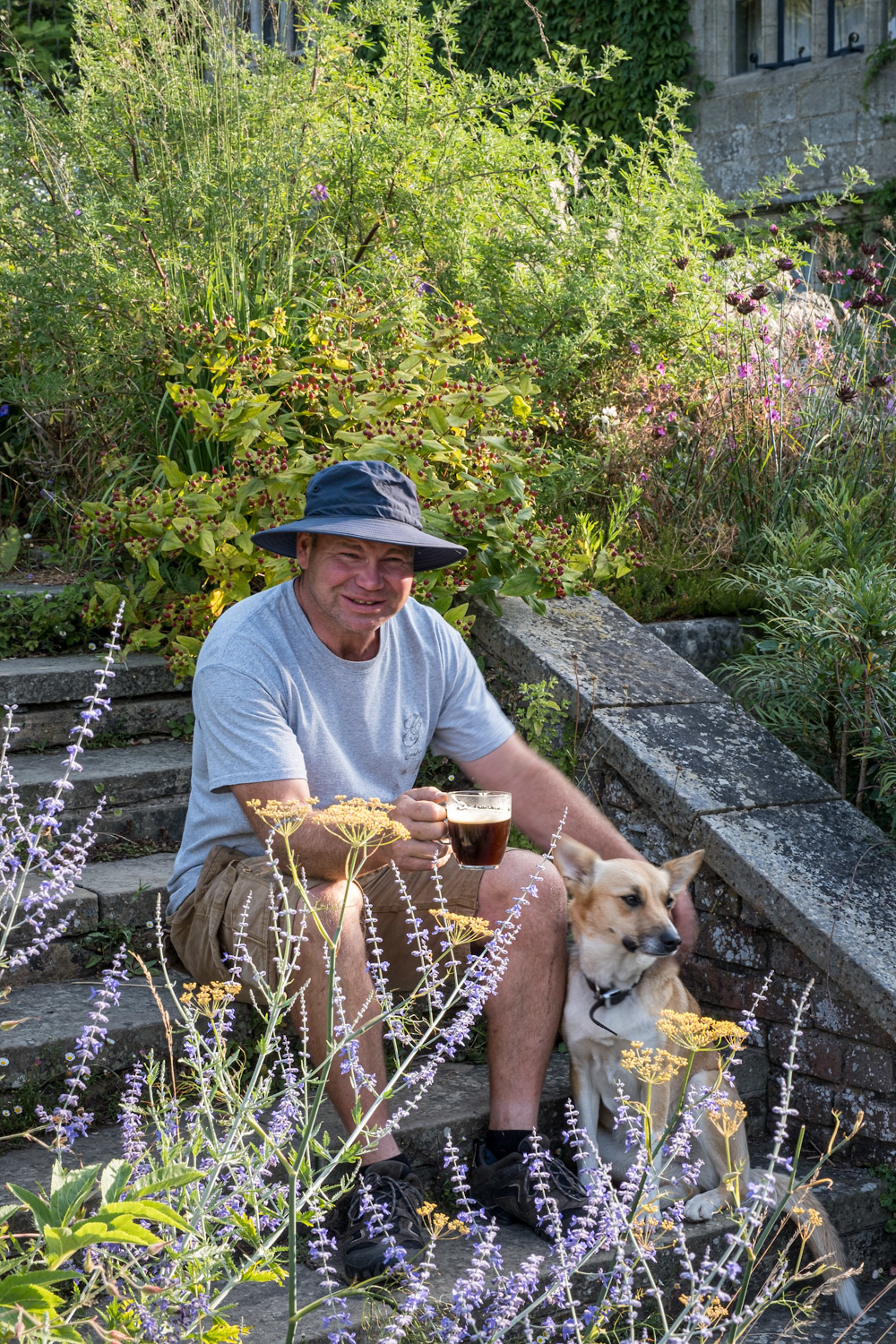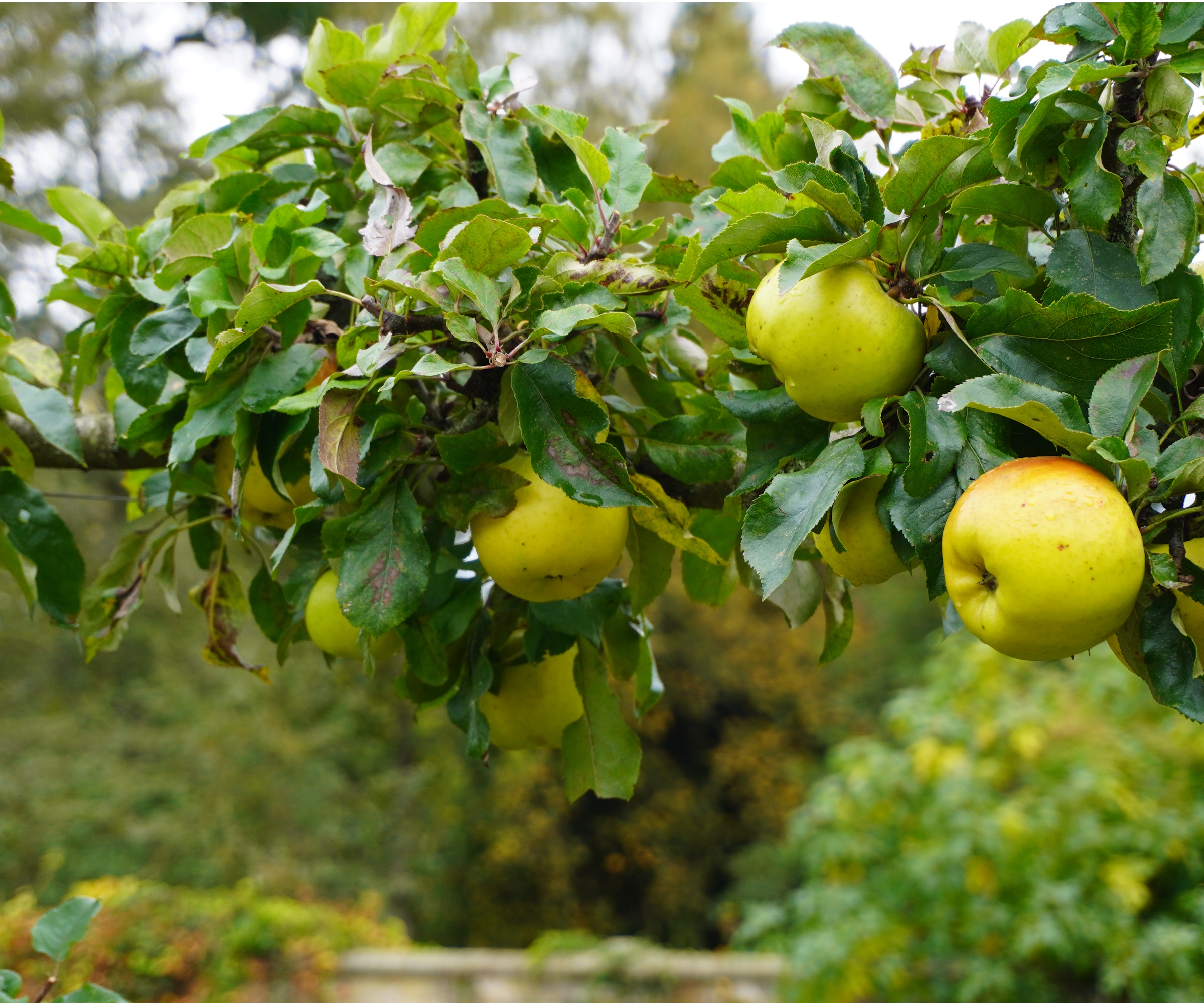'Growing Flavors You Simply Can't Buy' – A Head Gardener Reveals His Secret Recipe to Heritage Growing in a Victorian Kitchen Garden, Plus His Top 5 Varieties to Grow
And no, it isn't just a case of choosing heirloom varieties


If there's one thing you've likely heard gardeners say over and over again, it's just how valuable heirloom fruit and vegetable varieties are. These are varieties that have proven the test of time, often passed down through generations of gardeners and farmers, and reliably crop every year with resistance to pests and diseases.
One of the best places to find inspiration for heirloom varieties to grow is kitchen gardens, and I recently had the privilege of visiting the iconic walled kitchen garden at the luxury hotel Gravetye Manor in Sussex, England. It was formerly the home of renowned Victorian horticulturalist and garden author William Robinson, and today the kitchen garden serves the hotel's Michelin Star restaurant.
Tom Coward, Gravetye Manor's Head Gardener, is passionate about growing the very best flavors he can. He revealed to me the trick is not only relying on heirloom varieties, but also using heritage techniques, and throwing modern crops into the mix. It's this recipe that allows him to grow such high-quality crops and, as he notes, 'flavors you simply can't buy'.
Gravetye Manor's Heritage Growing

Heirloom seeds are found in kitchen gardens after being passed down for their exceptional qualities, not only in flavor but also in ease of growing. This is often because they are open-pollinated, meaning they are pollinated naturally by the wind, insects, or birds, which allows them to maintain their characteristics as seeds are saved and grown again.
It's something quite fitting for Gravetye Manor's history. William Robinson first constructed the walled kitchen garden around 1900. It did fall into disuse over many decades after he died in 1935, but in 2010, Tom Coward joined Gravetye and began an incredible restoration project. Today, it's one of the last large-scale Victorian walled kitchen gardens in full working use.
'Growing food was incredibly important to William because he grew up poor and lived through the Great Hunger. It was essential we restored that value of the garden and continue to protect it through our growing,' he describes.
Today, the walled kitchen garden has impressive beds of brassicas, root vegetables, legumes, fruit trees, soft fruits, and more. Within, Tom and his team grow a mix of heritage and modern varieties every year.
Design expertise in your inbox – from inspiring decorating ideas and beautiful celebrity homes to practical gardening advice and shopping round-ups.
'Some of the crops we grow here are very old,' Tom notes. 'But, arguably the most important part of protecting the garden's heritage value is in the Victorian techniques we use, even for modern varieties, keeping that side of heritage growing alive.'
Some of these methods include growing peach trees in a Victorian glasshouse to protect them from issues like peach leaf curl (a fungal disease worsened by excessive rainfall). 'Allowing peaches to ripen on the branch under glass creates a delicious, intense flavor,' Tom says.
Tom and his team also make use of the engineering of the walled garden, which is purposely shaped elliptically to funnel out cold air through a frost gate and create a warm microclimate.
'We also have a crop rotation system,' Tom notes. 'We grow different vegetables in each bed and rotate them to prevent replant disease.'
This is where a crop struggles to grow in the same spot as before, due to a build-up of pests and diseases, and a lack of soil nutrients. By rotating where a crop is planted, they can grow stronger and more reliably.
'Heirloom varieties are important, but to get the best flavors from fruit and vegetables, we have modern ones in the mix. I think the best way to represent heritage is to plant the best possible varieties for flavor,' he adds, the approach he believes William himself would use.
'By using these techniques, I get to see the whole process from making our own compost, right the way through to the Michelin Star dish,' Tom says.

Tom has worked at Gravetye Manor since 2010, helping with major restorations of the garden. He has been a gardener since age 15 with a notable previous role at Great Dixter in East Sussex, England.
5 Kitchen Garden Varieties from Gravetye Manor

I asked Tom to share his top five crops growing at Gravetye Manor, and here's what he picked out:
'Howgate Wonder' apple – this is an heirloom variety originating in the Isle of Wight in the 1910s. It grows best across US hardiness zone 4 to zone 8, and Tom notes it produces one of the tastiest juices.
Florence fennel – an heirloom vegetable, growing best across US hardiness zone 5 to zone 9. It is exceptionally fragrant and is a popular salad ingredient.
Find Florence fennel seeds at Burpee.
'Wonder Tree Doyenne du Comice' pear – a delicious heirloom pear, originating in mid-1800s France. In the US, it's best grown across US hardiness zone 5 to zone 9. This pear is considered a dessert pear, loved for its sweet flavor.
'Cylindra' beetroot – an unusual heirloom beetroot, with cylindrical taproots (hence the name). Hardy across US hardiness zone 3 to US hardiness zone 10, it makes an excellent addition to root vegetable patches, looking attractive when growing as well as providing sweet, earthy flavor.
Find 'Cylindra' beetroot seeds on Amazon.
'Avalon Pride' peach – not an heirloom variety, but a highly resistant peach tree. At Gravetye Manor, it grows on the south wall of the kitchen garden with resistance to peach leaf curl. It grows best in US hardiness zone 5.
If Gravetye Manor's heritage growing has inspired you to start growing your own fruit and vegetables, our guide to planning a kitchen garden may be useful. Make sure to also read up on vegetable gardening mistakes to aid your success.

Tenielle is a Gardens Content Editor at Homes & Gardens. She holds a qualification in MA Magazine Journalism and has over six years of journalistic experience. Before coming to Homes & Gardens, Tenielle was in the editorial department at the Royal Horticultural Society and worked on The Garden magazine. As our in-house houseplant expert, Tenielle writes on a range of solutions to houseplant problems, as well as other 'how to' guides, inspiring garden projects, and the latest gardening news. When she isn't writing, Tenielle can be found propagating her ever-growing collection of indoor plants, helping others overcome common houseplant pests and diseases, volunteering at a local gardening club, and attending gardening workshops, like a composting masterclass.